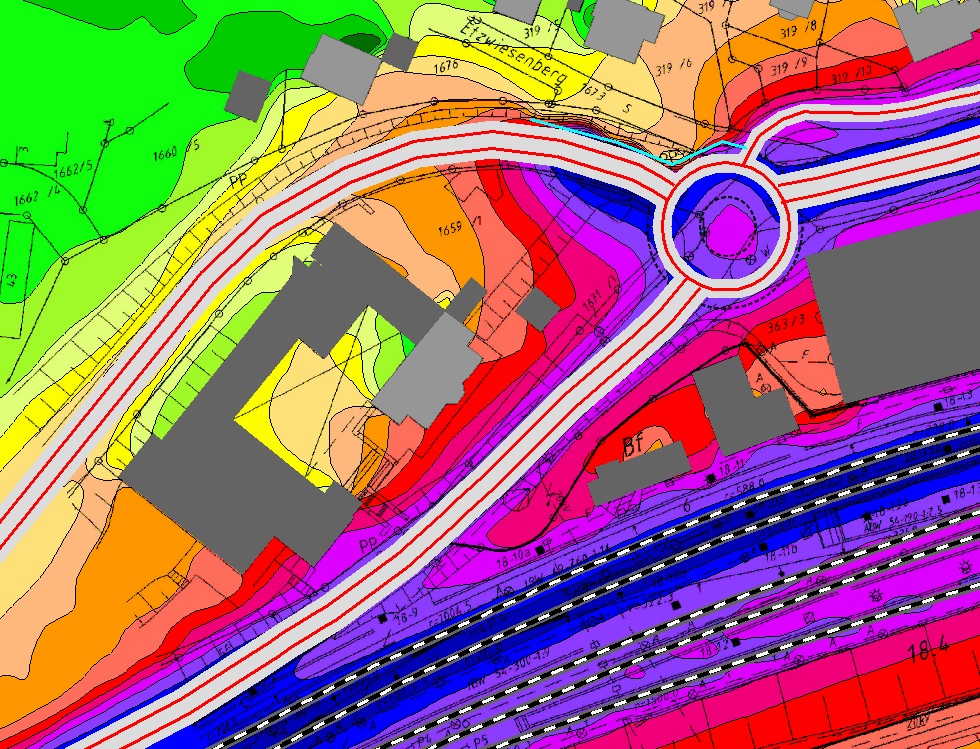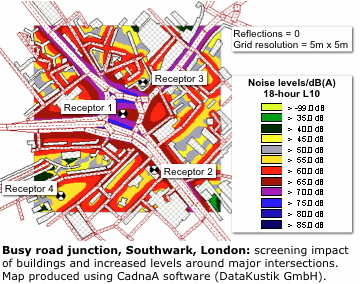

#What is noise mapping professional#
Noise surveys provide useful information which enables a safety professional to identify: It is worth noting that the UK is not alone in this and that numerous countries have developed workplace standards to ensure that the average level to which an employee is exposed during an 8 hour day does not exceed 85dB(A). A survey is used to establish whether employees are being exposed to occupational noise levels exceeding the exposure limits set by the regulations (in the UK, the Control of Noise at Work Regulations 2005) or even the limits set by the company.

The public typically only sees these data individually, and now we’ll see how these interdependent data sets will present a more comprehensive picture.A noise survey involves taking noise measurements throughout an entire plant or a particular section to identify noisy areas. Being able to see the modes together is also exciting. “The most exciting thing is that this is the first time we’re really venturing out into this world of providing a noise map and data that people can use. “So while the noise models are different, we’re bringing them together geospatially.” New TerritoryĪs the National Transportation Noise Mapping Tool moves into future phases, the Volpe team hopes to include noise data from additional transportation modes, including rail and maritime. “We’re using a common grid,” said Ahearn. The data were then converted into GIS layers to create the noise maps. To determine daily road noise data, the FHWA’s Traffic Noise Model was used in conjunction with data from the Highway Performance Monitoring System to obtain the average daily noise levels for automobiles, medium trucks, and heavy trucks. Using the FAA’s Aviation Environmental Design Tool and conservative assumptions, the team was able to model the average number of daily flight operations from airports across the country, excluding military operations. To create a comprehensive map of noise levels, the Volpe team used a multitude of data sources from the Federal Aviation Administration (FAA) and Federal Highway Administration (FHWA). NTNMT may also be used to demonstrate the impacts of largescale noise mitigation efforts, as well as provide a true multimodal context to the public. Land use decisions could be tailored to take noise levels into consideration. Noise maps can help inform decisions to invest in highway noise barriers, airport sound insulation programs, and quiet vehicle technologies. “Noise data have the potential to help prioritize transportation investments,” Ahearn said. The yearly trends in noise levels that NTNMT can provide will be particularly useful to policy makers and community planners in understanding noise level impacts. “It’s a tool to help people be more informed.” Potential Noise Mapping Applications “With this tool, we will be able to provide multiple years of data that people can use in their own analyses,” said Ahearn. The first national, multimodal, transportation-focused noise dataset developed by BTS includes GIS layers that allow users to toggle between airplane and road noise sources, or view the cumulative noise for the modes. “So if we were to have quieter transportation sources or other mitigation techniques, you could directly see the effect of that.” “The goal of this tool is to get a sense for trends in noise exposure over years,” Ahearn said.

Aviation and road noise data from 2014 are available as part of the National Transportation Atlas Database (NTAD) from the BTS Geospatial Data Catalog.Ī sample aviation and road noise map generated by the the National Transportation Noise Mapping Tool. The Volpe Center team developed the first phase of this multimodal tool, the National Transportation Noise Mapping Tool (NTNMT), for the Bureau of Transportation Statistics (BTS) to allow for a daily state-by-state breakdown of sound level data for aviation and road noises. To better understand transportation sound levels, a team led by Volpe Center scientist Meghan Ahearn and geographic information systems (GIS) specialist Gary Baker developed a simplified noise modeling tool that makes it easy to track trends in noise levels over time. population expected to grow by more than 100 million by 2050, heightened transportation demands may increase the burden of high noise levels for many of us. Whether we’re in urban, suburban, or rural environments, many of us are impacted by the noise levels associated with different kinds of traffic-be it from motor vehicles on our roadways, ships maneuvering waterways, trains passing through rail corridors, or planes in the sky.


 0 kommentar(er)
0 kommentar(er)
